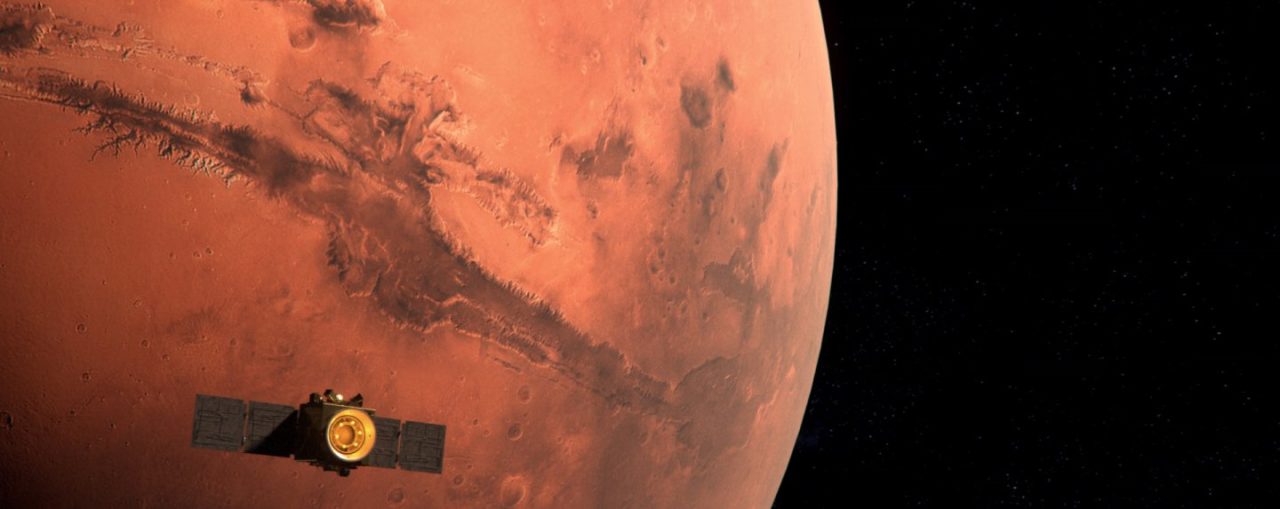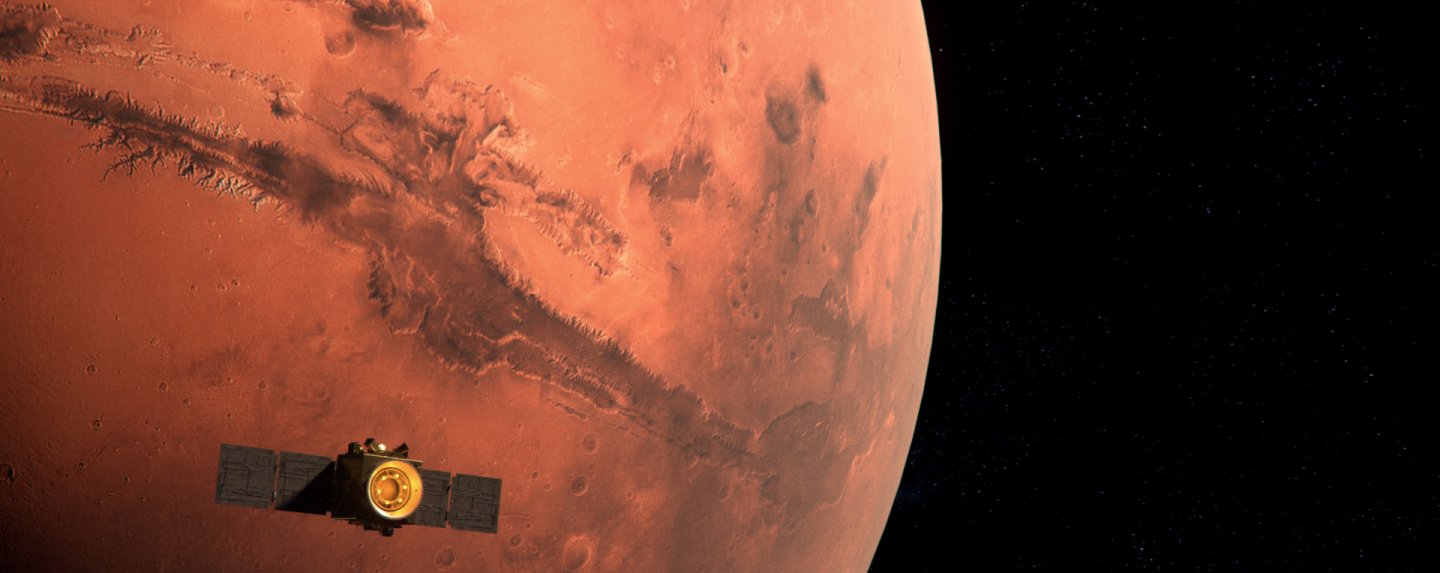Happy Anniversary to the United Arab Emirates Hope Probe – It’s been one full year since the spacecraft successfully reached orbit around Mars. In honor of this historic event, we’re taking a moment to celebrate this interplanetary mission and the vast potential of UAE-US space exploration.
The Emirates Mars Mission was launched back in July 2020, from the Tanegashima Space Center in Japan. After a seven-month-long journey, Hope officially entered Mars’ orbit on February 9, 2021. The spacecraft’s arrival not only made the UAE the first Arab country and fifth globally to do so, but the second country in global history to enter Mars’ orbit on its very first try.

In celebration of this amazing event, Sarah bint Yousef Al Amiri, Minister of State for Advanced Technology and Chairwoman of the UAE Space Agency, stated:
“Tuesday 9 February 2021 has become an historic occasion for the Emirates, marking a unique achievement for our young nation. The Hope Probe is an inspiring success story for the youth of the Emirates and the Arab world in general and comes as the culmination of a multinational effort to drive the development of our space sector, contribute to our growing space sector and bring new insights into our human understanding of our nearest planetary neighbour – Mars.”
Hope Probe Brings New Scientific Discoveries
After one full year in orbit, the Hope Probe has lived up to its promise and helped scientists better understand the many mysteries of Mars. Through this new research, a number of exciting discoveries and observations have come to light.
For example, Hope is responsible for capturing the first-ever photos of dancing atmospheric lights in Mars’ night sky. These glowing lights proved to be a rare phenomenon called “discrete aurora,” which had never been observed on the red planet before.
Unlike earth’s auroras, which can only be seen near the North and South poles, Martian auroras can be seen from all around the planet. This discovery is particularly important because it may lead scientists to discover why Mars has lost its magnetic field and oxygen-rich atmosphere, both vital for sustaining life.
In the last 12 months, the Hope orbiter has also spent a great deal of time gathering photos and data focused on Mars’ atmosphere and climate. So far, the probe has been able to capture the planet’s fully illuminated hemisphere, water-ice clouds, dust storms and foggy craters known as Arabia Terra.
By closely observing the planet’s lower and upper atmosphere, Hope is helping scientists all around the world to further study why Mars has transformed into the cold and dry planet it is today. The mission releases new data on this subject every three months, with the newest report scheduled to be released this April.
While the Emirates Mars Mission was originally planned to last one Martian year (687 earth days), Science Lead Hessa Al Matroushi, has already announced plans for an extension.
“The success of Hope is already assured from our early results and observations and we can already see a vast number of new potential avenues of exploration opening up as a result of our early data,” said Al Matroushi. “We are seeing Mars in remarkable detail and are able to characterise the diurnal behaviours of Mars’ atmosphere for the first time ever. The potential we are now seeing from the mission undoubtedly exceeds our expectations.”
What’s Next for UAE-US Space Exploration
The Emirates Mars Mission demonstrates the true power behind the UAE’s historic alliance with the US.
From the very beginning, Emirati scientists have worked closely with the University of Colorado Boulder, University of California, Berkeley, Arizona State University and Northern Arizona University to make this mission possible.
In addition, UAE astronauts are actively training and preparing for future missions at NASA’s Johnson Space Center in Houston, Texas. Following graduation, they will be eligible to embark on a number of future missions alongside some of the best astronauts of NASA.
Together, they have already announced plans for a new asteroid mission scheduled to launch in 2028. This future mission will build heavily on the design of the Hope Probe, while discovering new and innovative ways to advance scientific research in the space industry.
Excited to take part in this future mission, Pete Withnell, Hope Program Manager at the University of Colorado Boulder, said “Seven years ago, we had no idea what it would be like to work with the Emiratis. It was challenging from a technical perspective, but very rewarding on a personal one, and we have lifelong friendships coming out of this.”
In addition, the UAE Space Agency joined several other countries in signing NASA’s Artemis Accords. This international agreement aims to deepen global cooperation on lunar exploration, which includes sending the first women and second man in global history to the surface of the Moon by 2024. The accord will not only take the world of space exploration to new heights, but promote peace and innovation among the global community.
